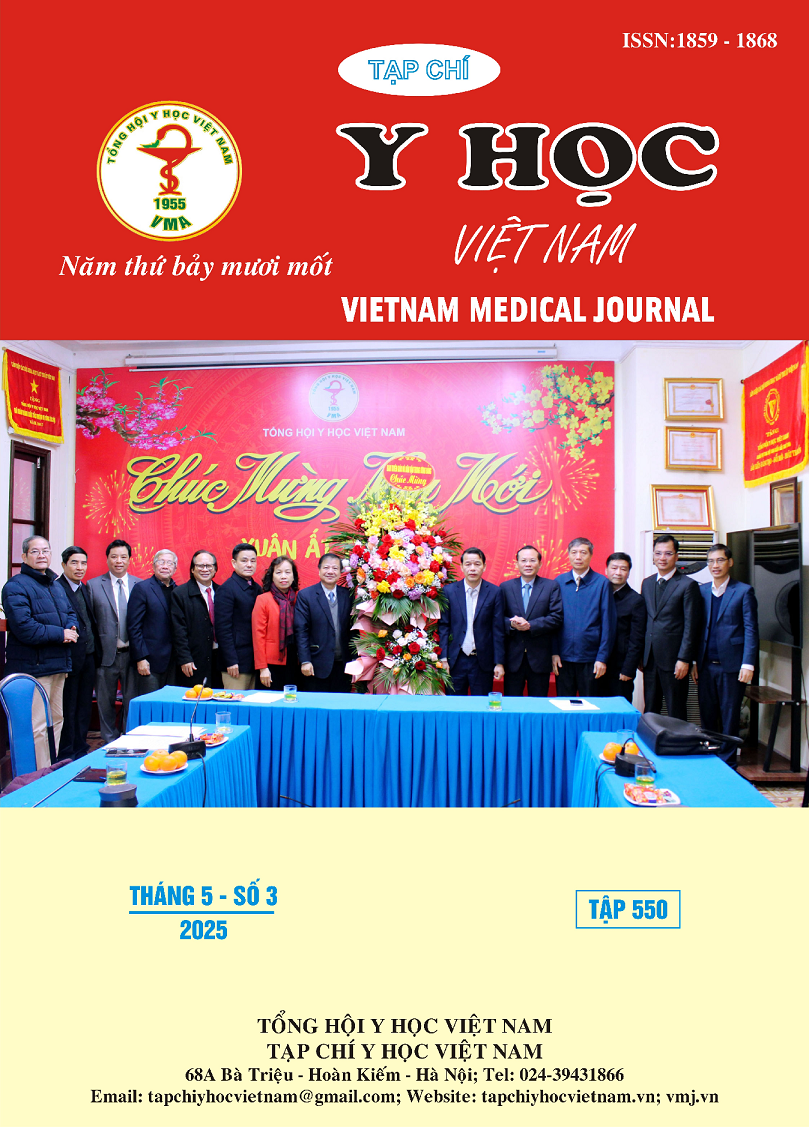ROLE OF CRANIOFACIAL DYNAMICS IN SEVERE CLASS III MALOCCLUSION TREATMENT
Main Article Content
Abstract
Objectives: This study aimed to evaluate the role of craniofacial dynamics in severe skeletal Class III treatment. Methods: A retrospective study was conducted on 30 patients with severe skeletal Class III malocclusion treated using the multiloop edgewise archwire (MEAW) technique. Data included extra and intraoral photos, study models, and lateral and frontal cephalograms. The photos were scored using a VAS scale. Study models were scored according to ABO standards, and dentofacial characteristics were assessed using cephalometric analyses by Ricketts and Sato. Correlations between dentofacial esthetic improvement, dentoskeletal changes as well as the role of craniofacial dynamics in anteroposterior skeletal relationships were evaluated. Results: Skeletal changes included an increase in posterior cranial length (p < 0.001), associated with chin backward displacement, leading to improvement of anteroposterior skeletal relationship (p<0.001). After treatment, the average overjet was 2.9 mm, with a significant improvement of 4 mm (p<0.001). The findings reflected a dentofacial esthetic improvement from an “ugly-acceptable” to a “normal-harmonious” level, meeting ABO standards for good occlusion and enhanced anteroposterior skeletal relationships. Conclusion: The MEAW technique impacts skeletal relationships through craniofacial dynamics in the of treatment severe Class III malocclusion. Enhanced anteroposterior relationships result from increased posterior cranial length and clockwise mandibular rotation. The camouflage effect involves proclination of the upper incisors and retroclination of the lower incisors.
Article Details
Keywords
MEAW technique, craniofacial dynamics, skeletal Class III malocclusion
References
2. Sato S. (2001), A treatment approach to malocclusions under the consideration of craniofacial dynamics. Makati, Philippines: Meaw Publishing House.
3. Kyoko Ishizaki, Koichi Suzuki, Sadao Sato (2010) "Morphologic, functional, and occlusal characterization of mandibular lateral displacement malocclusion". Am J Orthod Dentofacial Orthop 137 (4), 454e1-e9.
4. Sadao Sato, Akiyoshi Shirasu (2019) Orthodontic treatment of malocclusion aimed at establishing functional occlusion, Daiichi Shika publishing Company, Japan, 239.
5. Y. H. Kim (1987) “Anterior openbite and its treatment with multiloop edgewise archwire” Angle Orthod.; 57(4): 290-321.
6. M. Tabancis, A. Ratzmann, P. Doberschütz and K. F. Krey (2020) "Multiloop edgewise archwire technique and denture frame analysis: a systematic review". Head & Face Medicine, 16 (32), 2-9.
7. Endo T, Kojima K, Kobayashi Y, Shimooka S. (2006), Cephalometric evaluation of anterior open-bite nonextraction treatment, using multiloop edgewise archwire therapy. Odontology.;94(1):51–8.
8. Kim Y, Han U, Lim D, Serraon M. (2000), Stability of anterior openbite correction with multiloop edgewise archwire therapy: a cephalometric follow-up study. Am J Orthod Dentofac Orthop.;118(1):43–54.
9. Orthodontics American Board of (Revised 2013) "The ABO Discrepancy Index (DI) A Measure of Case Complexity".
10. Cù Hoàng Anh, Trần Ngọc Quảng Phi (2016). Chỉ số đo sọ bình thường phân tích Ricketts trên người Việt Nam trưởng thành. Tạp chí Y học thực hành 999 (3), 45 – 48.


